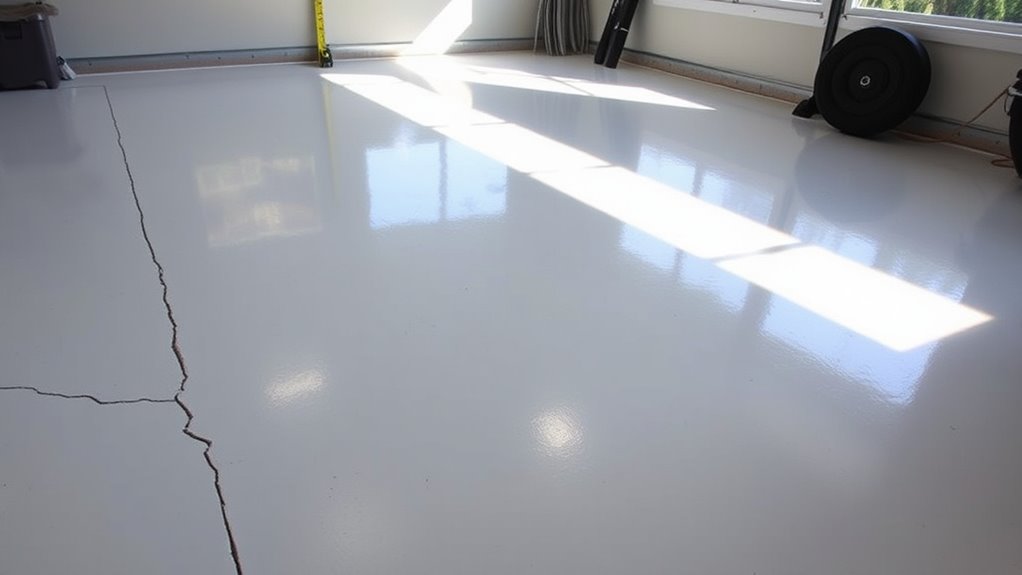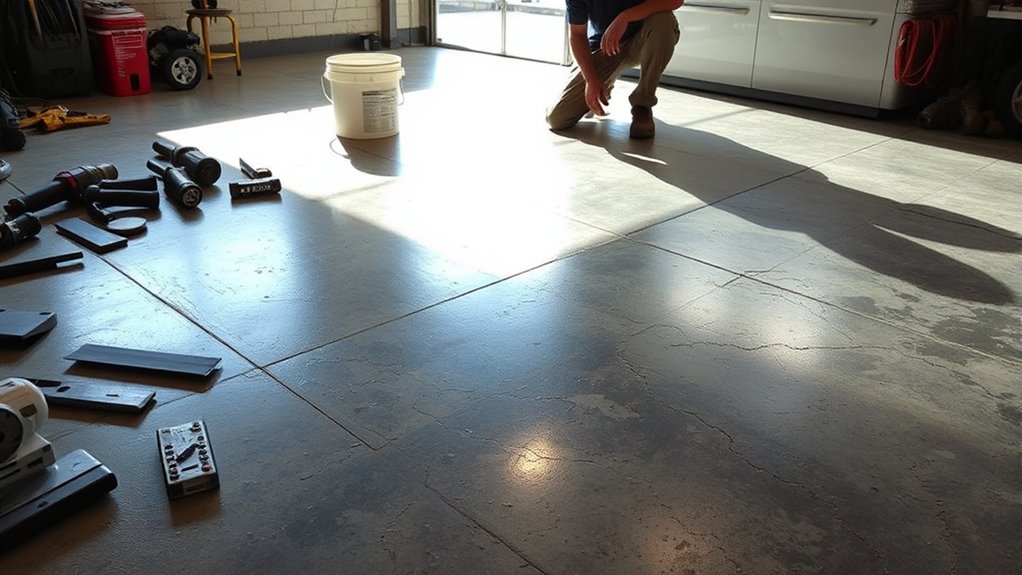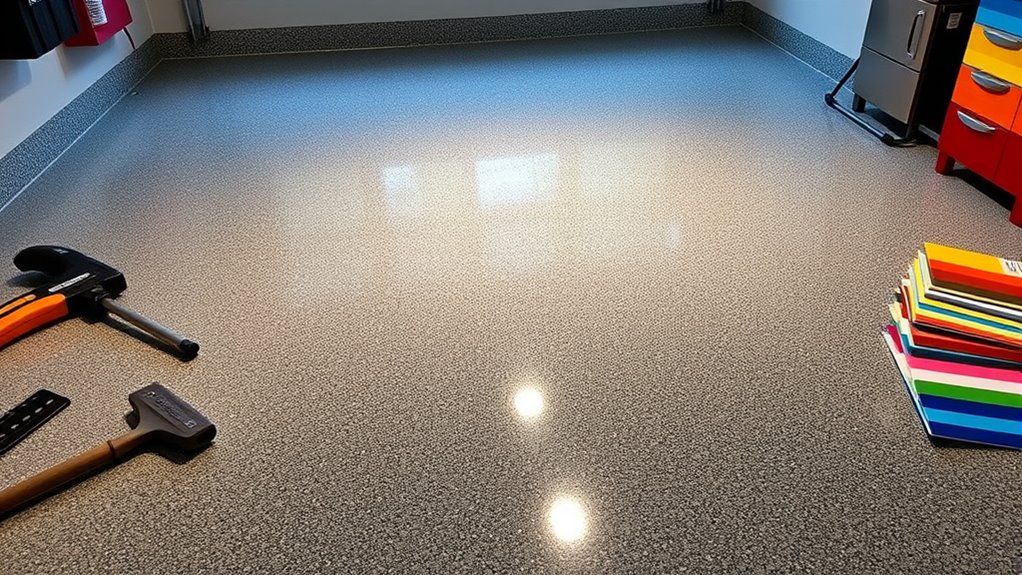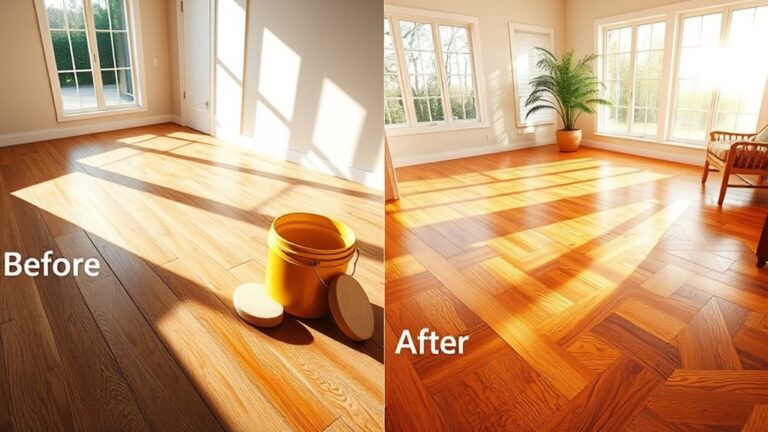Five main factors affect how much your garage floor coating will cost. First, the size and condition of your floor determine material and repair needs. Second, the type of coating—epoxy, polyurethane, or acrylic—impacts durability and price. Third, surface prep like cleaning and crack repair adds labor and material costs. Fourth, labor rates and installation complexity influence total expense. Finally, customization such as color and texture can increase prices. Understanding these helps you budget wisely and explore detailed options.
Size and Condition of the Garage Floor

Although the overall cost of garage floor coating depends on various factors, the size and condition of your garage floor play a crucial role. Your floor dimensions directly impact the amount of coating material and labor required, making larger garages more expensive to coat. Additionally, the surface texture influences preparation time and cost. A smooth, clean surface needs minimal prep, while rough or damaged textures require more extensive repair, grinding, or cleaning to guarantee proper adhesion. Cracks, oil stains, or uneven areas must be addressed before coating application, increasing both labor and material expenses. Understanding these aspects lets you anticipate costs accurately and maintain freedom in selecting the right solution for your garage floor, optimizing durability and budget without compromising quality.
Type of Coating Material Selected
When choosing the type of coating material for your garage floor, you’ll find that each option varies considerably in cost, durability, and application requirements. The choice you make directly impacts the longevity and appearance of your floor, as well as your budget.
- Epoxy coatings are popular for their strong adhesion and chemical resistance. They provide a glossy finish but can be more labor-intensive to apply.
- Polyurethane options offer superior UV resistance and flexibility, making them ideal for garages exposed to sunlight. They tend to be pricier but last longer.
- Acrylic sealers are a budget-friendly alternative, though they don’t offer the same durability or chemical resistance as epoxy or polyurethane.
Understanding these key differences helps you select the right material that balances cost with performance and freedom for your garage space.
Surface Preparation Requirements

Choosing the right coating material is only part of the process; preparing the garage floor surface properly is equally important to confirm the coating adheres well and performs as expected. Before application, you’ll need to address any surface imperfections like cracks, chips, or rough patches. These flaws can compromise the coating’s durability if left untreated. Effective cleaning methods, such as pressure washing or acid etching, remove oil, grease, and dirt that prevent adhesion. Additionally, moisture levels must be assessed because excessive dampness can cause coating failure. By thoroughly repairing damage and utilizing the proper cleaning techniques, you confirm a smooth, clean base that maximizes coating lifespan and appearance. Skipping or rushing surface preparation often leads to costly repairs or premature coating replacement.
Labor and Installation Costs
Labor and installation costs typically account for a significant portion of your total garage floor coating expense. These costs depend heavily on labor rates in your area and the installation time required for your specific project. Understanding these factors helps you anticipate the financial commitment without surprises.
- Labor Rates: Skilled installers charge varying hourly rates depending on location and expertise; higher rates often mean better quality work.
- Installation Time: The complexity and size of your garage impact how long the job takes—more time equals higher labor costs.
- Project Complexity: Surface irregularities or repairs extend installation time, increasing labor expenses.
Additional Features and Customization Options

Beyond labor and installation expenses, additional features and customization options can influence your overall garage floor coating costs. When selecting color options, you’re not limited to standard grays or blacks; custom hues or multiple colors can raise the price due to increased complexity and material requirements. Texture finishes, such as non-slip surfaces or decorative patterns, also affect costs. These finishes improve functionality and aesthetics but may require specialized application techniques or additional materials. If you want a floor that’s both visually appealing and practical, expect to pay more for these enhancements. Keep in mind, your choices directly impact durability and maintenance, which can save money long-term. By understanding how color options and texture finishes contribute to cost, you can better tailor your garage floor coating to fit your budget and personal style.




